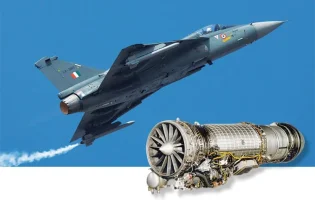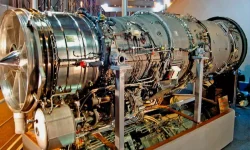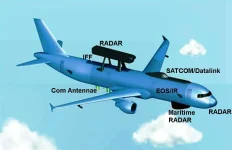- Views: 2K
- Replies: 10
Solar Defence and Aerospace Limited has revealed the prototype of its latest indigenous weapon system, the Nagastra-3 loitering munition. This advanced system represents a notable advancement in India's domestic defence manufacturing capabilities.
Developed under a Project Sanction Order from the Ministry of Defence, the Nagastra-3 falls under the Make-I category of the Defence Acquisition Procedure (DAP) 2020, which supports local design and development.
Boasting a target range of 100 kilometers and the ability to stay airborne for over five hours, the Nagastra-3 significantly improves upon earlier versions and supports India's goal of self-reliance in defence technology.
Currently under development, the Nagastra-3 is designed to be part of the Medium Range Precision Kill System (MRPKS). The goal of the MRPKS initiative is to equip the Indian armed forces with the ability to accurately strike targets from long distances.
Loitering munitions, sometimes referred to as "suicide drones," like the Nagastra-3, merge the reconnaissance abilities of unmanned aerial vehicles (UAVs) with the attack capabilities of guided missiles.
These systems are designed to wait ('loiter') over a designated area, identify targets, and then perform a precision strike, making them particularly effective against valuable or moving targets in potentially hostile areas.
The Nagastra-3's impressive 100-kilometer range allows it to penetrate deep into adversary territory, exceeding the reach of its predecessors, the Nagastra-1 and Nagastra-2.
Its extended endurance of more than five hours provides ample time for surveillance and target acquisition before an attack is ordered, enhancing operational flexibility and reducing risk to ground troops.
Furthermore, the system can be launched using either a tube or a catapult, adding to its adaptability for different combat situations, including targeting personnel or important enemy structures.
The development of Nagastra-3 through the Make-I route highlights India's commitment to the 'Atmanirbhar Bharat' (self-reliant India) policy in the defence sector. This category specifically encourages Indian companies to undertake research, design, and development of complex defence systems, often with government financial support.
Solar Defence and Aerospace Limited, a subsidiary of Solar Industries, is playing a crucial role in this effort. The Nagastra series follows the successful introduction of the Nagastra-1 into the Indian Army in 2024, which reportedly achieved over 75% indigenous content, and the development of the Nagastra-2, known for its improved portability and different warhead options.
The Nagastra-3 aims to further enhance these capabilities for India's defence forces.




